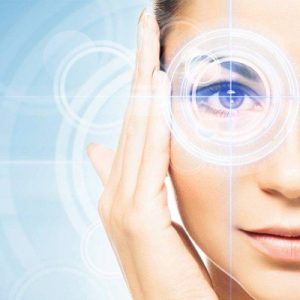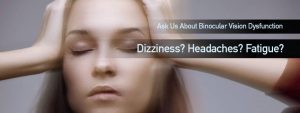Home > Vision Therapy > Neuro-Optometry
Neuro-Optometry
- What is a traumatic brain injury (TBI)?
- How does a TBI affect vision?
- Should everyone who has suffered a TBI see an eye doctor?
- What is Neuro-Optometric Rehabilitation?
-
Visual Rehabilitation After a Car Accident
Over 90% of people who sustain a concussion from a car accident suffer from visual symptoms. According to statistics published by the Centers for Disease... -
What Are Acquired Brain Injuries?
The largest at-risk group for suffering a brain injury are males between 40 and 49 years old. What is an ABI? Acquired brain injury (ABI)... -
Vision Problems from Multiple Sclerosis
Multiple Sclerosis impacts the lives of over 140 in 100,000 people. Multiple sclerosis (MS) is a disease where the immune system attacks the healthy nerve... -
Vision and Brain Injuries
Can the eyes and visual system be affected by a brain injury? Yes, Traumatic brain injury (TBI) can result in significant vision problems, unfortunately these often remain undiagnosed for years, dramatically impacting the quality of life.... -
Visual Rehabilitation FAQs
These are the 10 most frequent questions asked to vision therapy eye doctors on vision therapy following a head injury. You may easily find answers to your questions below. If you still have questions, contact your nearest eye doctor experienced in TBIs, concussion and vision therapy... -
Vision and Vestibular Dysfunction
Do you often experience dizziness or feel as though the world is spinning around you (vertigo)? Do you experience motion sickness, or a persistent sense of unsteadiness or imbalance? You may have an inner ear disturbance called Vestibular Dysfunction. The good news is that these symptoms can be significantly reduced with vision therapy, allowing you to regain your quality of life.... -
What Are Prism Lenses?
Prism lenses can be effectively used to treat vision conditions, such as double vision and other binocular vision difficulties. One of the most common uses for an eye doctor to prescribe prisms is to treat a condition known as Binocular Visual Dysfunction (BVD).... -
Third Nerve Palsy
Third Nerve Palsy, also called Oculomotor Palsy, occurs when the third cranial nerve becomes injured or diseased. The third cranial nerve controls the actions of four external eye muscles. As the third cranial nerve controls many of the eye’s muscles and functions, palsy of this nerve can result in complete or partial paralysis of the eye.... -
Fourth Nerve Palsy
Fourth Nerve Palsy, also known as Superior Oblique Palsy or Trochlear Nerve Palsy, occurs when the fourth cranial nerve becomes diseased or damaged. The fourth cranial nerve controls the actions of the superior oblique eye muscle and is responsible for turning the eye inward and downward.... -
Sixth Nerve Palsy
Sixth nerve palsy, also called abducens nerve palsy, is a rare condition that occurs when the sixth cranial nerve, also called the abducens nerve, becomes damaged. Each year, around 11 in 100,000 people are diagnosed with sixth nerve palsy. The sixth cranial nerve is responsible for sending signals to the lateral rectus muscle. When the sixth cranial nerve becomes damaged, it prevents the lateral rectus muscle from operating and results in an inward eye turn (esotropia) and double vision.... -
Nystagmus
Nystagmus is an eye condition that causes repetitive involuntary eye movements. These movements can cause the eyes to move from side to side, up and down, or in circular motions. Nystagmus frequently leads to unsteady and impaired vision and depth perception which can cause poor balance and coordination....
















